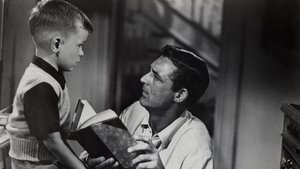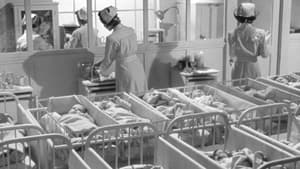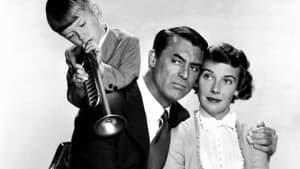Contact: [email protected]
Video Sources 0 Views
- Watch trailer
- Room for One More


Synopsis
Table of Contents
ToggleReview: Room for One More (1952) – A Heartwarming Tale of Family, Compassion, and Second Chances

Introduction
Room for One More, released in 1952, is a heartwarming family drama directed by Norman Taurog. Set in post-war America, this film tells the uplifting story of a couple who open their hearts and home to children in need. In this review, we’ll explore the heartwarming narrative of Room for One More and its enduring message of love, compassion, and the power of family.
Check The Full Colorized Movies List
Check Our Colorized Movies Trailer Channel
Understanding Room for One More (1952): Director, Cast, and Genre
Directed by Norman Taurog, Room for One More features a talented cast led by Cary Grant and Betsy Drake. The film falls within the family drama genre, known for its exploration of universal themes and heartfelt storytelling.
Exploring the World of Room for One More (1952): Plot and Characters
Room for One More follows the heartwarming journey of Anna (Betsy Drake) and George Rose (Cary Grant), a compassionate couple who decide to expand their family by fostering children in need. As they navigate the challenges and joys of parenthood, they form deep bonds with their foster children and discover the true meaning of love and family.
The Art of Film Colorization
While Room for One More was originally filmed in black and white, its early colorized version adds a new layer of visual richness and warmth to its heartfelt storytelling. The colorization process enhances the film’s emotional impact and captures the vibrant energy of family life, immersing viewers in the heartwarming world of the Rose family with authenticity and nuance.
Early Colored Films: A Brief History
The history of early colored films is marked by innovation and experimentation as filmmakers sought to enhance the visual appeal of their movies. From hand-tinted frames to groundbreaking technicolor processes, the evolution of colorization techniques transformed the cinematic landscape, offering audiences a new way to experience their favorite stories.
Room for One More (1952) and Its Early Colored Version
The decision to release Room for One More in a colorized format was made with the intention of immersing audiences in the warmth and vibrancy of family life and enhancing the film’s visual appeal. While some purists may prefer the original black and white version, the early colorized edition of the film adds a new layer of depth to its storytelling and captures the heartwarming spirit of the Rose family with authenticity and nuance.
The Debate Over Film Colorization
The debate over film colorization continues to divide audiences and industry professionals alike. While some argue that colorization enhances the visual appeal of classic films and makes them more accessible to modern audiences, others maintain that it compromises the artistic integrity of the original work. As technology advances and filmmaking techniques evolve, the debate over colorization remains a topic of ongoing discussion within the film community.
Examining Room for One More (1952) as an Early Colored Film
Viewing Room for One More in its early colorized iteration offers audiences a fresh perspective on its heartwarming narrative and timeless themes. The colorization process enhances the film’s emotional impact and brings to life the vibrant energy of family life, immersing viewers in the joys and challenges of parenthood with authenticity and nuance. As Anna and George Rose open their hearts and home to children in need, their journey serves as a powerful reminder of the transformative power of love and compassion.
Influence and Legacy: Room for One More (1952)’s Impact on Cinema
Room for One More is widely regarded as a heartwarming and uplifting family drama that celebrates the power of love, compassion, and the importance of family. Its portrayal of the Rose family’s journey has inspired audiences around the world and influenced the depiction of foster care and adoption in popular culture. As a testament to its enduring relevance, Room for One More remains a poignant and unforgettable cinematic experience that continues to resonate with audiences of all ages.
Director’s Cinematic Legacy: Beyond Room for One More (1952)
Norman Taurog’s directorial legacy extends far beyond Room for One More, encompassing a diverse body of work that explores themes of love, family, and redemption. As a filmmaker, Taurog was known for his ability to tell compelling stories with heart and authenticity, as evidenced by his masterful direction of Room for One More. The film stands as a testament to his talent and creativity, solidifying his reputation as one of the great directors of his time.
Themes Explored in Room for One More (1952)
At its core, Room for One More explores themes of love, compassion, and the power of family in the face of adversity. Through its heartfelt narrative and memorable characters, the film delves into the transformative impact of opening one’s heart and home to children in need. As Anna and George Rose navigate the challenges and joys of parenthood, their journey serves as a powerful reminder of the enduring bonds of love and the importance of family in our lives.
Reception and Controversy Surrounding Room for One More (1952)
Upon its release, Room for One More received widespread critical acclaim for its heartwarming narrative, heartfelt performances, and uplifting message. However, the decision to release the film in a colorized format sparked debate among fans and critics alike. While some praised the colorization process for enhancing the film’s visual appeal, others questioned its necessity and expressed concern about preserving the integrity of Taurog’s original vision.
Where to Watch Room for One More (1952) Online
For those eager to experience Room for One More for themselves, the film is readily available on popular streaming platforms such as Amazon Prime Video, Google Play Movies, and iTunes. Whether viewed in its original black and white format or its early colorized iteration, Room for One More offers a heartwarming and uplifting cinematic experience that is sure to leave a lasting impression.
FAQs About Room for One More (1952)
1. Is Room for One More based on a true story?
No, Room for One More is a fictionalized portrayal of a couple who open their hearts and home to children in need. While the film’s characters and storyline are works of fiction, its exploration of the power of love and family draws inspiration from real-life experiences and universal themes.
2. Who starred in Room for One More?
Room for One More stars Cary Grant as George Rose, a compassionate man who decides to expand his family by fostering children in need, and Betsy Drake as Anna Rose, his loving and supportive wife. Their heartfelt performances bring depth and authenticity to their respective roles, elevating the emotional resonance of the film and capturing the spirit of love and compassion that defines the Rose family.
3. What is the central conflict of Room for One More?
At its core, Room for One More revolves around the central conflict of opening one’s heart and home to children in need. As Anna and George Rose navigate the challenges and joys of parenthood, they must confront their own doubts and insecurities while providing a safe and nurturing environment for their foster children to thrive.
4. Why was Room for One More released in a colorized format?
The decision to release Room for One More in a colorized format was made with the intention of immersing audiences in the warmth and vibrancy of family life and enhancing the film’s visual appeal. While some purists may prefer the original black and white version, the early colorized edition of the film adds a new layer of depth to its storytelling and captures the heartwarming spirit of the Rose family with authenticity and nuance.
5. What is the legacy of Room for One More?
Room for One More is widely regarded as a heartwarming and uplifting family drama that celebrates the power of love, compassion, and the importance of family. Its portrayal of the Rose family’s journey has inspired audiences around the world and influenced the depiction of foster care and adoption in popular culture.
6. Are there any sequels or remakes of Room for One More?
No, there are no direct sequels or remakes of Room for One More. However, the film’s enduring legacy and timeless themes have left an indelible mark on the portrayal of love, compassion, and the power of family in cinema, inspiring countless imitators and influencing the way family relationships are depicted onscreen.
7. Where can I watch Room for One More online?
For those eager to experience Room for One More for themselves, the film is readily available on popular streaming platforms such as Amazon Prime Video, Google Play Movies, and iTunes. Whether viewed in its original black and white format or its early colorized iteration, Room for One More offers a heartwarming and uplifting cinematic experience that is sure to leave a lasting impression.
Conclusion
In conclusion, Room for One More remains a heartwarming and uplifting family drama that celebrates the power of love, compassion, and the importance of family in our lives. Whether viewed in its original black and white format or its early colorized iteration, Norman Taurog’s classic film offers a timeless and resonant cinematic experience that continues to inspire audiences of all ages. As viewers immerse themselves in the heartwarming journey of the Rose family, they are reminded of the transformative power of love and the enduring bonds that unite us as a family, making Room for One More a cherished cinematic gem that is sure to stand the test of time.













